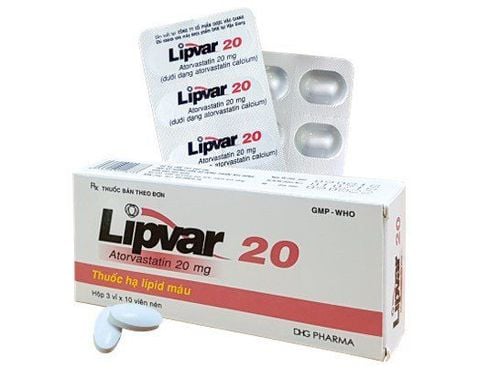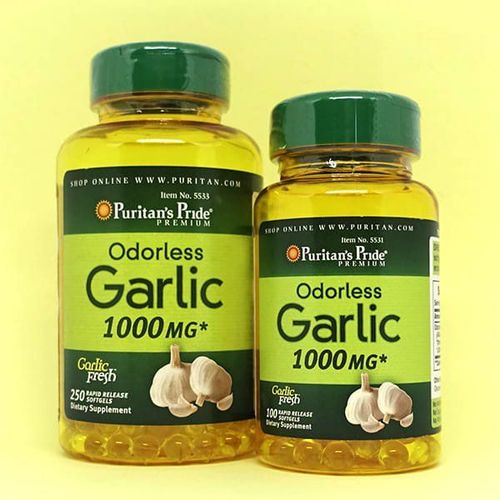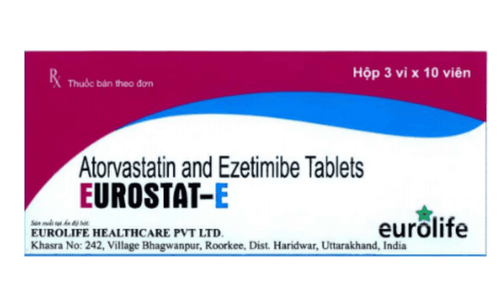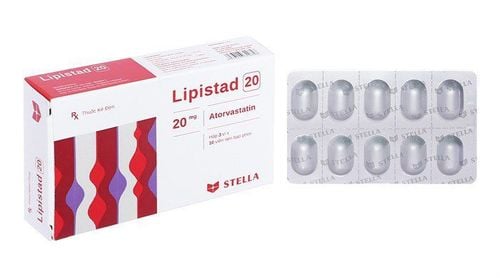This is an automatically translated article.
Lipanthyl is a drug commonly prescribed in the treatment of dyslipidemia, specifically hyperlipidemia. The following article is provided for the purpose of helping readers have more complete information about what Lipanthyl does and how to use it, in what dosage.1. General information about Lipanthyl
Lipanthyl belongs to a class of prescription drugs that are indicated for the treatment of high blood lipid / cholesterol problems. The main ingredient of Lipanthyl is the active ingredient fenofibrate - a derivative of fibric acid. Currently, the market is selling two Lipanthyl drugs, 100mg Fenofibrate and 300mg Fenofibrate, respectively, with 48 or 30 tablets per box, respectively.
1.1. Pharmacodynamics of the active ingredient Fenofibrate in Lipanthyl Fenofibrate is the main component of Lipanthyl, therefore, the pharmacodynamics of this active ingredient is the main one. According to information from experts, Fenofibrate has the ability to improve blood cholesterol levels by 20% to 25%, and reduce blood triglyceride levels by 40% to 50%. The effect of improving cholesterol levels comes from the activity of reducing the fraction that causes plaques in the arteries with a low density (including VLDL and LDL ), and also improves the distribution of cholesterol in the blood by reducing the rate of cholesterol in the blood. of total cholesterol compared with HDL cholesterol. When this ratio is high, the patient's risk of developing hyperlipidemia also increases and can lead to atherosclerosis. The scientists also found an association between hyperlipidemia and atherosclerosis, as well as between atherosclerosis and cardiovascular problems. Therefore, the active ingredient Fenofibrate through its atherogenic activity has brought about positive effects on cardiovascular health. In particular, the long-term treatment of Lipanthyl can significantly reduce the amount of cholesterol stored outside the blood vessels, even stopping this condition completely. Lipanthyl has also been shown to have a positive effect on uric acid excretion in patients with hyperlipidemia. The average amount of uric acid decreased by about 25%.
Another elevated rate that is also considered a sign of atherosclerosis is the ratio between Apoprotein A1 and Apoprotein B. Thanks to its antiplatelet effect, Fenofibrate in animal models and clinical trials. in humans also demonstrated the ability to improve this ratio significantly by increasing the amount of apoprotein A1.
1.2. What are the pharmacokinetics of Lipanthyl? Fenofibrate when absorbed will be converted into Fenofibric acid by the body and this active substance will remain in plasma with the highest concentration after about 5 hours of taking the drug. Fenofibric acid has a strong binding to plasma albumin, and also pulls vitamin K antagonists from protein binding, which enhances the coagulation effect of these drugs. Fenofibric acid has also been studied for excretion: about 70% of the acid is actively excreted in the urine within 24 hours and up to 88% within 6 days. The maximum excretion of Fenofibric Acid is 93% in the faeces and urine as fenofibric acid or a conjugated derivative called glucuronic.
2. What effects does Lipanthyl have on heart health?
Lipanthyl is frequently indicated for hypercholesterolemia or hypertriglyceridemia, either alone or in combination, if the patient has not responded well to diet or other conventional therapies. In particular, Lipanthyl also supports the treatment of persistent hyperlipoproteinemia, even though there are measures to treat the cause (eg diabetes). However, during the treatment period, you cannot completely depend on the drug, it is necessary to combine it with a healthy diet, low in bad fats and fortified with green vegetables.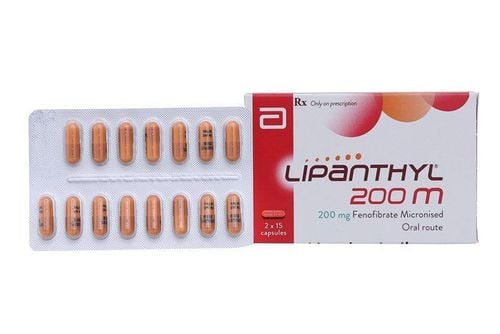
Thuốc Lipanthyl thường được chỉ định điều trị vấn đề lipid máu
3. Lipanthyl drugs have any group of contraindications?
The brand-name drug Lipanthyl still has contraindications (those who should not take the drug) that need special attention as follows:
The patient has an allergic reaction to any ingredient in Lipanthyl, especially active ingredients. high concentrations of fenofibrate. The patient has skin damage caused by UV rays in sunlight. Patient has severe liver, gallbladder or kidney problems. The pancreas is inflamed causing abdominal pain, not related to the concentration of fat in the blood...
4. Notes - caution in the process of using Lipanthyl
The active ingredient Fenofibrate when absorbed into the body has the potential to cause muscle damage and these injuries occur with a higher frequency than in patients with hypoalbuminemia.Fenofibrate-induced muscle damage often causes muscle soreness and can also significantly increase creatine-kinase levels up to 5 times normal. In this case, the patient should immediately stop taking Lipanthyl.
You should also note that: if, after about 3 to 6 months of Lipanthyl treatment, your serum lipid levels have not decreased or decreased very little, you need to switch to additional therapies or other replacement.
Theoretically, the active ingredient Fenofibrate has not been reported to affect the fetus causing malformations and not cause toxicity to the fetus. However, if you are a mother and unless your blood triglyceride levels rise above 10g/l, you should not use this medicine during pregnancy to minimize the possible risk to your baby.
5. Lipanthyl and how to use it - usual dosage
Each Lipanthyl tablet is available in tablet or capsule form with different doses of the active ingredient Fenofibrate. However, the most common way to take Lipanthyl pills is that you should take one tablet whole with plenty of water, do not open, crush or chew the medicine. Regarding the time to take Lipanthyl, you can actively use it at any time of the day, as long as your stomach is not empty and the time of use is fixed daily.
For dosage, in adults, doctors usually recommend 1 Lipanthyl tablet per day. However, the dose may be increased and the number of days of treatment may vary depending on the specific disease.
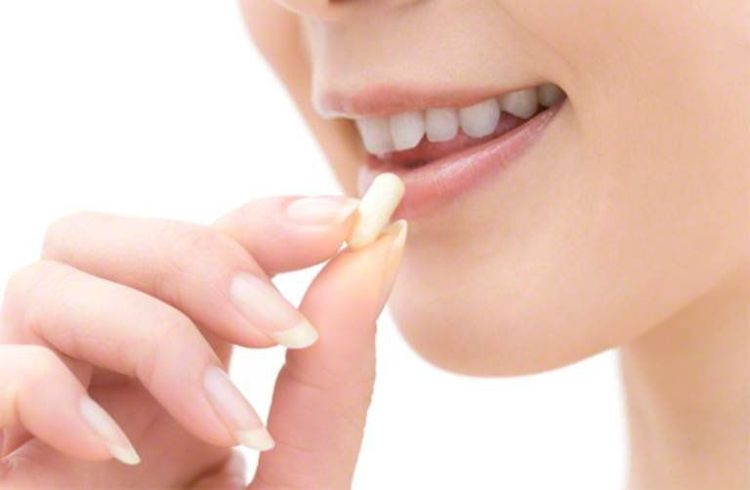
Thuốc Lipanthyl cần được sử dụng theo chỉ dẫn của bác sĩ chuyên khoa
6. What are the side effects of taking Lipanthyl?
Common side effects of Lipanthyl include:
Fatigue and headache, feeling dizzy, spinning with the world around. Symptoms of mild to severe gastrointestinal disorders such as stomach pain, diarrhea, vomiting... Your skin is paler and often an itchy rash... Patients after taking Lipanthyl also report that they tend to have a tendency to The direction of light sensitivity causes the skin to become blistered, sunburn quickly. Unexplained cramps, muscle aches, even myositis and muscle rupture (rare). Increases liver enzymes and causes muscle toxicity. The body appears significant blood clotting, back pain, stomach pain... It can be said that Lipanthyl is a good drug in the treatment of high cholesterol and cholesterol, supporting the prevention and improvement of a series of problems. about cardiovascular. To ensure the effectiveness of treatment and avoid unwanted side effects, patients need to strictly follow the instructions of the doctor or pharmacist.
Follow Vinmec International General Hospital website to get more health, nutrition and beauty information to protect the health of yourself and your loved ones in your family.
Please dial HOTLINE for more information or register for an appointment HERE. Download MyVinmec app to make appointments faster and to manage your bookings easily.




